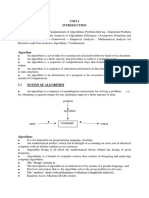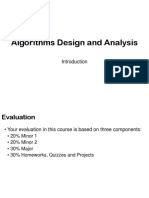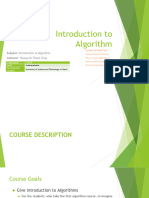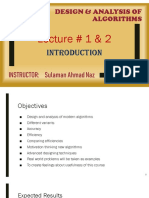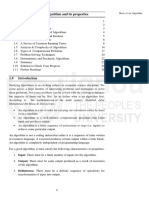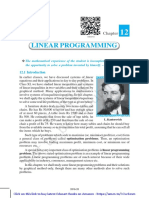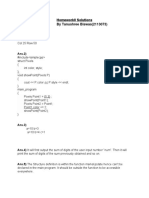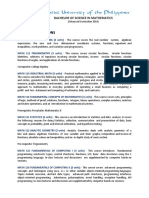0% found this document useful (0 votes)
9 views27 pagesLec 1 (A) - Solving A Problem With A Computer
The document discusses the importance of algorithm design and analysis in solving computational problems. It emphasizes the need for correctness and efficiency in algorithms, providing examples of various problem-solving strategies such as brute force, divide and conquer, and dynamic programming. Additionally, it highlights the significance of analyzing time complexity to ensure that solutions are obtained in a reasonable timeframe.
Uploaded by
Fatima SaleemCopyright
© © All Rights Reserved
We take content rights seriously. If you suspect this is your content, claim it here.
Available Formats
Download as PPTX, PDF, TXT or read online on Scribd
0% found this document useful (0 votes)
9 views27 pagesLec 1 (A) - Solving A Problem With A Computer
The document discusses the importance of algorithm design and analysis in solving computational problems. It emphasizes the need for correctness and efficiency in algorithms, providing examples of various problem-solving strategies such as brute force, divide and conquer, and dynamic programming. Additionally, it highlights the significance of analyzing time complexity to ensure that solutions are obtained in a reasonable timeframe.
Uploaded by
Fatima SaleemCopyright
© © All Rights Reserved
We take content rights seriously. If you suspect this is your content, claim it here.
Available Formats
Download as PPTX, PDF, TXT or read online on Scribd
/ 27





